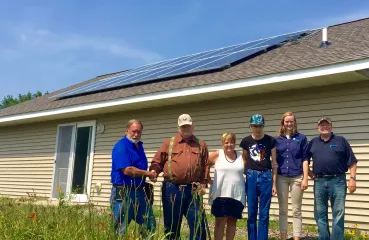A CERTs Seed Grant the college received gave Powell the opportunity to teach air leakage control and other skills which are certified by BPI. Most of the rest of the curriculum is associated with BPI principles and best practices.
Although students expressed interest in the certification, its expense, typically around $500, was too much for them, Powell said. The skills are important to know, but it remains unclear whether certification matters in a local market where contractors are hard to come by, he conceded.
An attempt to attract contractors to earn certification through the college fell flat. Powell and school failed to find any contractors willing to go through the certification process. Even the offer of standalone training did not work.
The reason is simple.
“In this economy everybody is so busy,” he said. “It’s a tough sell right now. The need is there but it’s hard to get people interested.”
Powell is honest with his students that much of the highest paying work in the industry is in commercial construction, not weatherization. As a niche, however, weatherization and other energy efficiency skills allow students to build their own businesses with just a handful of employees and have an endless stream of work.
The college reports every graduate will find a job. Students attending the class have all found summer work for contractors.





